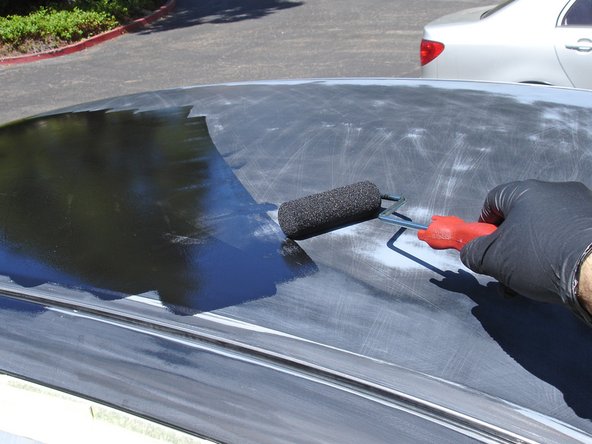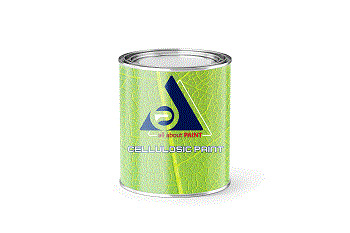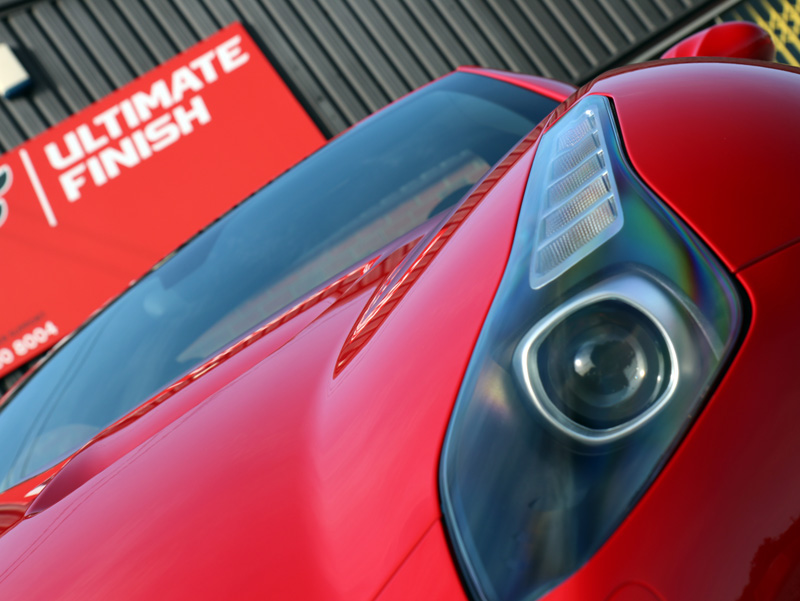Hand Painting a Car

Hand Painting a Car
Use this guide to draw a car with your hand. This guide covers probably the hardest part - rolling on paint with a roller.
You can also use cans of spray paint ("rattle canning" the car), but the best results will come from an air-powered sprayer — but also at the highest cost.
Generally speaking, a car's paint job consists of a base layer (the colorful part), and a clear coat layer on top of the base.
If you were to spray paint the with an air-powered sprayer, that would be the method to pursue.
However, since this guide shows how to roll on the paint, we'll be using a glossy Rustoleum Enamel paint that will serve as both base and clear coat.
You'll have to roll on several thin coats of paint, but it will still technically be a "single coat" paint job.
Always work in a well ventilated area and remember to use proper safety gear when prepping the car for paint and when painting, especially respiratory safety gear.
This is bound to be a long and involved project, so work slowly and carefully to have the best possible paint job possible.
Also take a couple of pictures of the car before starting the job, so you can remember how terrible everything looked like prior to your new paint job :)
step 1Hand Painting a Car
Use the proper safety gear when sanding. Full length clothing, a painter's mask and eye protection should be worn to prevent irritation or injury.
Remove all the headlights and tail lights so that the paint matches on the edges of the body. Cover any holes that you don't want to become dusty and painted.
step 2 Hand Painting a Car
Use a power sander with a low-grit sand paper to strip the old paint off the surface of your vehicle. Use a sanding block or just the sand paper to reach small or hard-to-get places.
Make the first pass with at least 100 grit, possibly even as low as 40 grit sandpaper. Coarser grits will remove the paint efficiently, but leave a very rough finish.
Make a second pass with finer sandpaper (200 grit), to reduce the scratches and smooth out the body.
Repeat the procedure with 400, 800, and 1500 grit sandpaper to make the car's surface super-smooth. Spend a good amount of time with each grit, as it will be much harder to remove the deep scratches down the line.
Wipe off the sanding dust occasionally to help speed the sanding process.
step 3 Hand Painting a Car
Once you have stripped the paint off all the parts that you wish to paint, rinse them with water and wipe them down with a clean lint-free cloth so the paint will stick.
Cover all parts of the car that you don't want to be painted using masking tape and/or double sided tape with drop cloth. This includes lights, windows, mirrors, grills, tires, the ground/any close-by surfaces, etc.
step 4 Hand Painting a Car
Make a mixture of 50% Rustoleum paint, and 50% mineral spirits. The paint will be very, very thin.
If you over-apply the paint, it will run down the sides! Over-applying the paint will negate all the hard work you put into prepping the car for painting. If it happens, use a rag doused with pure mineral spirits to wipe off the runs.
Apply several thin coats of paint onto the car. Wait approximately 30 minutes between each coat to allow the paint to partially dry.
You will probably have to apply at least five thin coats of paint before the body (especially the Bondo areas) are no longer visible. Don't rush, and don't over-apply the paint
step 5 Hand Painting a Car
After the paint has fully dried, inspect it for cracks, runny spots, or any imperfections.
Smooth out any imperfections by wet sanding with water and 1500 grit sand paper.

.png)
.png)
.png)
.png)









